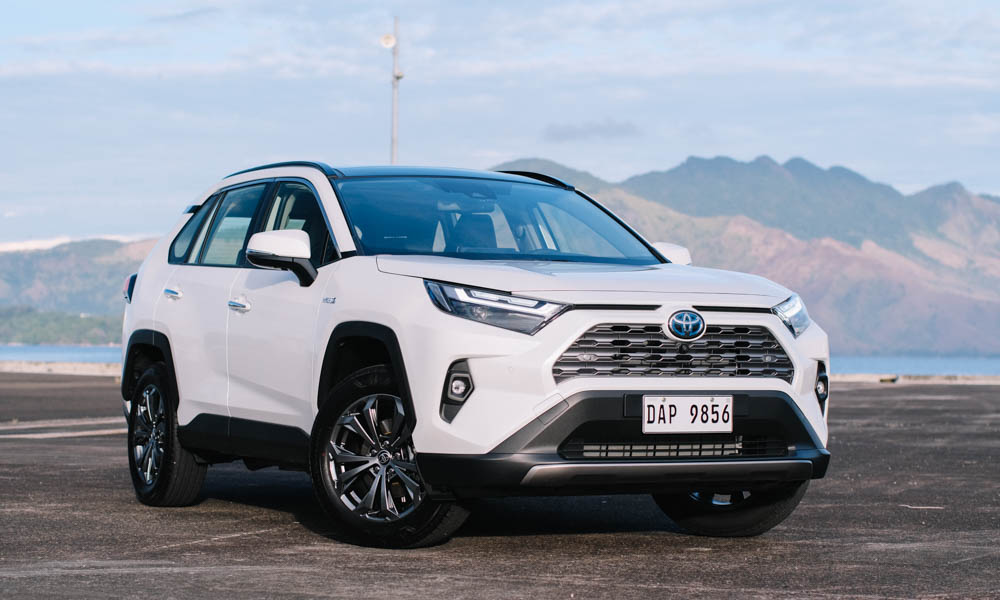
Are you a fan of the Toyota RAV4? The Japanese compact crossover has always been in the shadow of the Fortuner and its cheaper siblings. To most, they look toward other offerings mainly on the merit of price alone.
Of course, if you look beyond the price tag and spec sheet differences, the RAV4 has always offered a more refined experience for those who want one. Sadly, it isn’t enough to convince others to take a second look at the car. But now, it promises something that I personally think can justify its spot in the lineup: a hybrid system.
The RAV4 HEV is aimed at those who want a premium crossover without having to make the jump to a Lexus NX (which is the cheapest hybrid from the luxury marque).
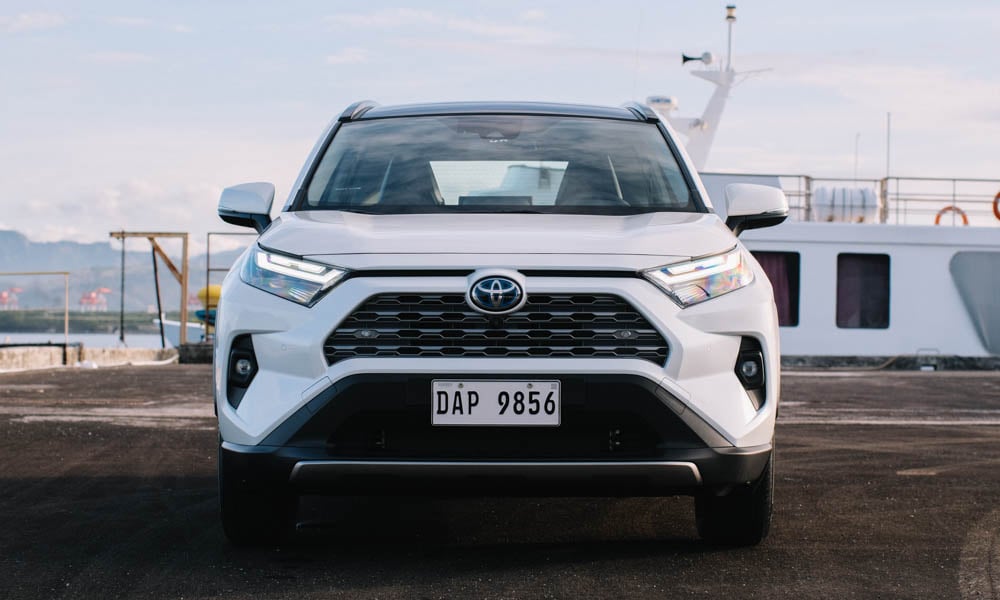
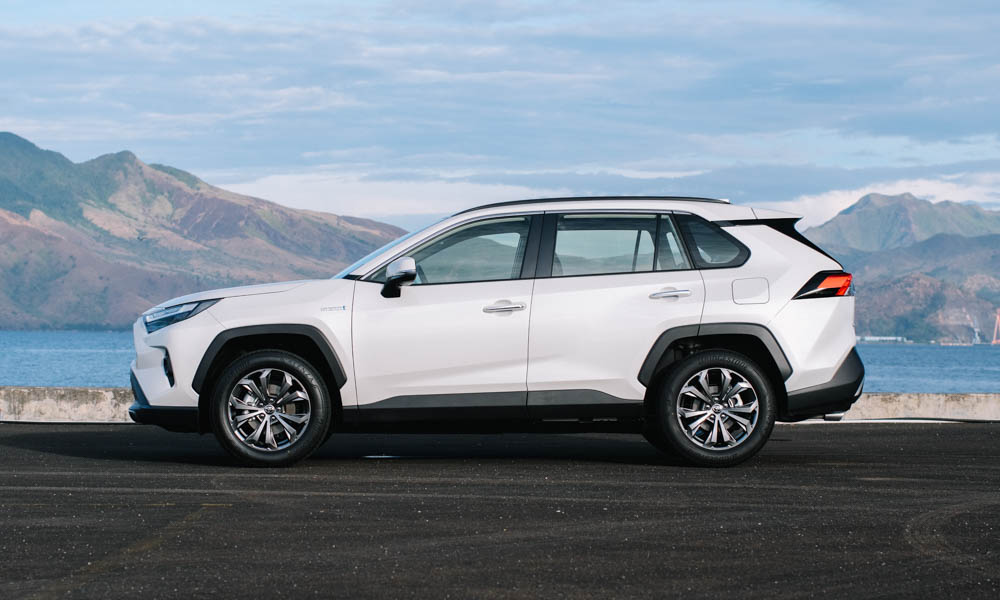
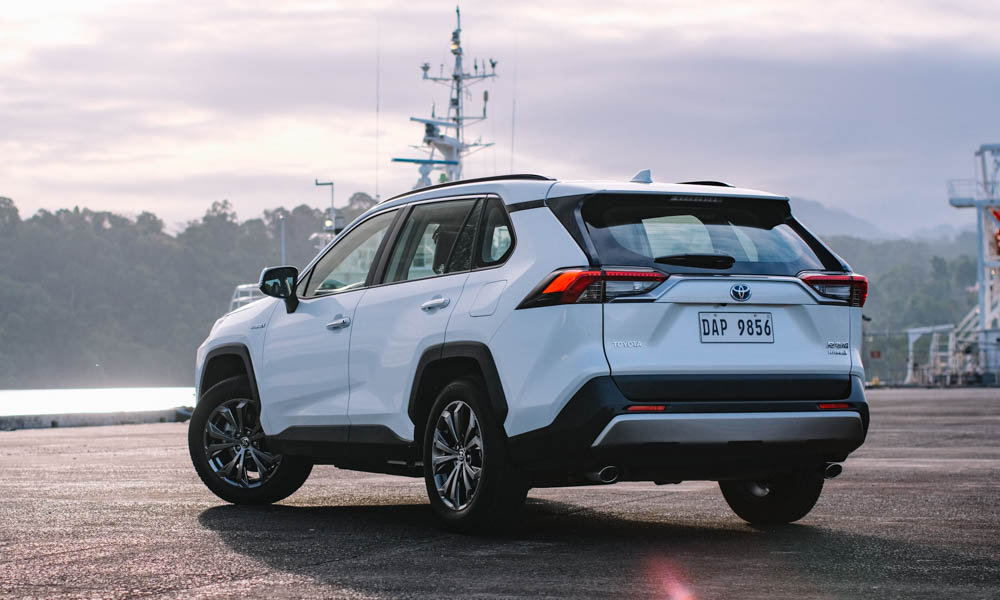
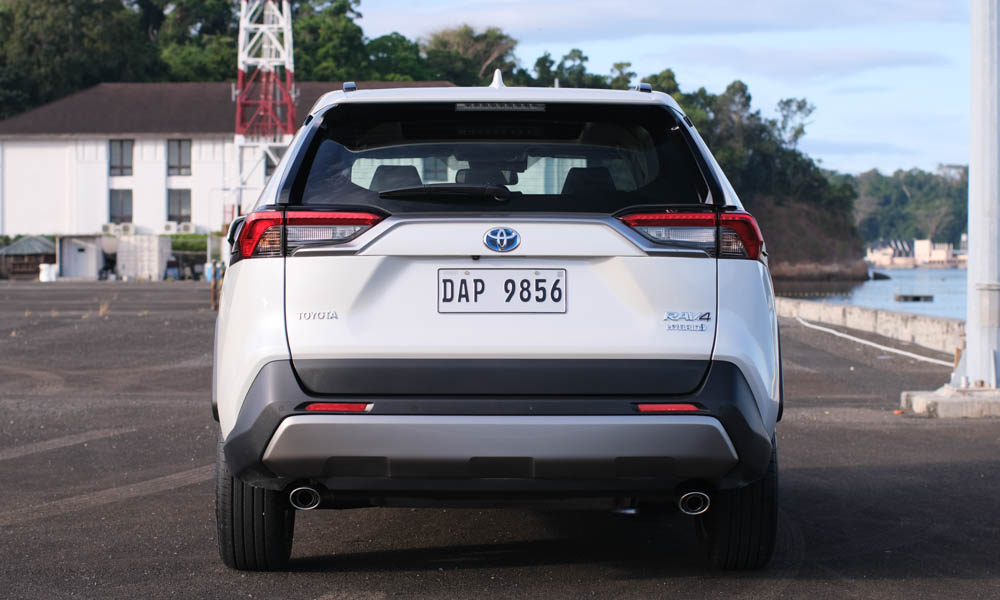
While this is just a minor facelift on the current RAV4 design, it has always stood out from the rest of the lineup with its angular design and boxy shape.
Some changes include the new DRLs, a revised front fascia, new 18-inch wheels, and the panoramic moonroof. The only way you’ll be able to tell that this is a hybrid is the, er, “Hybrid” badges and the blue-tinged Toyota logos.
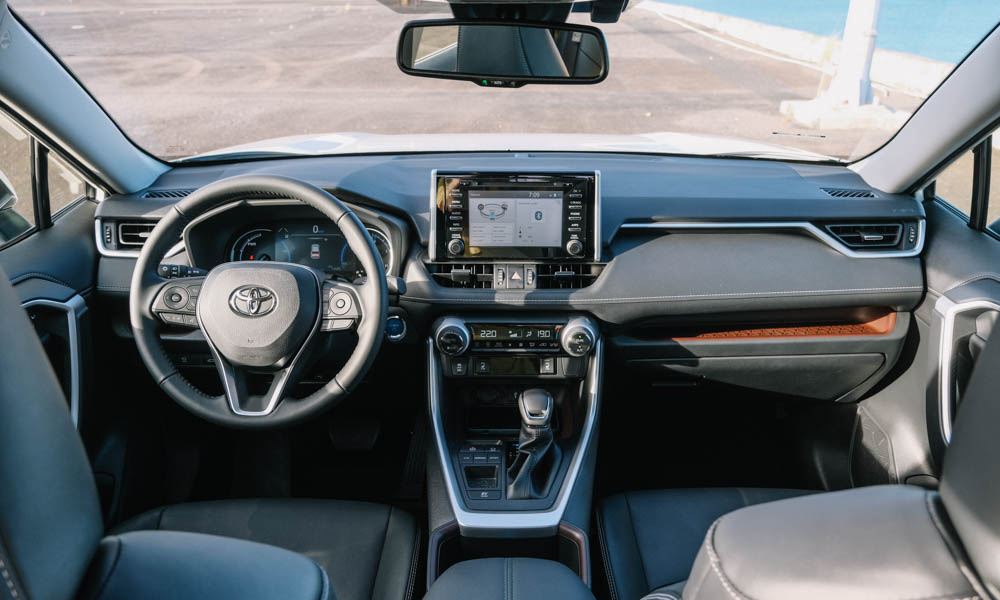
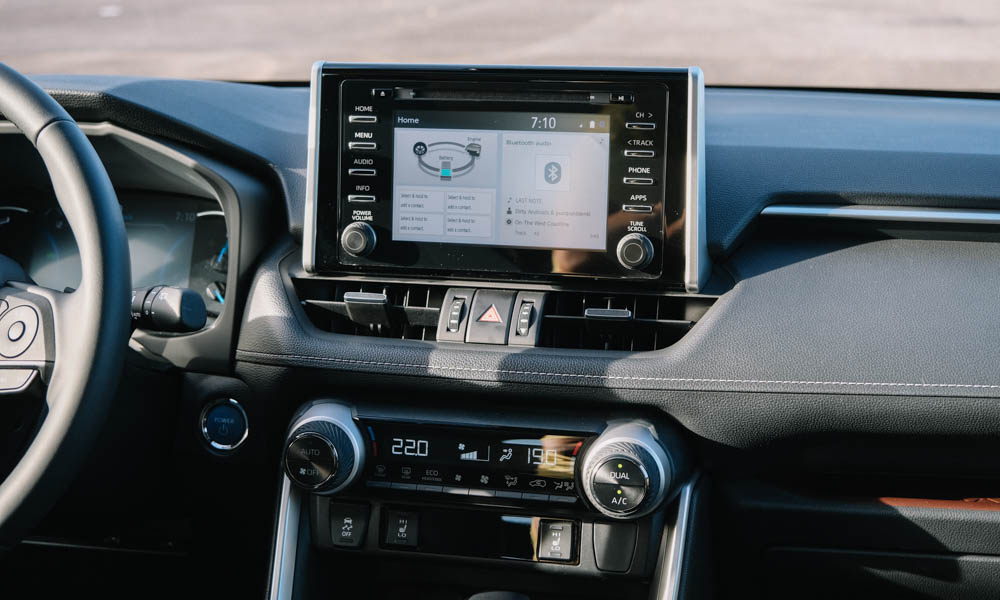
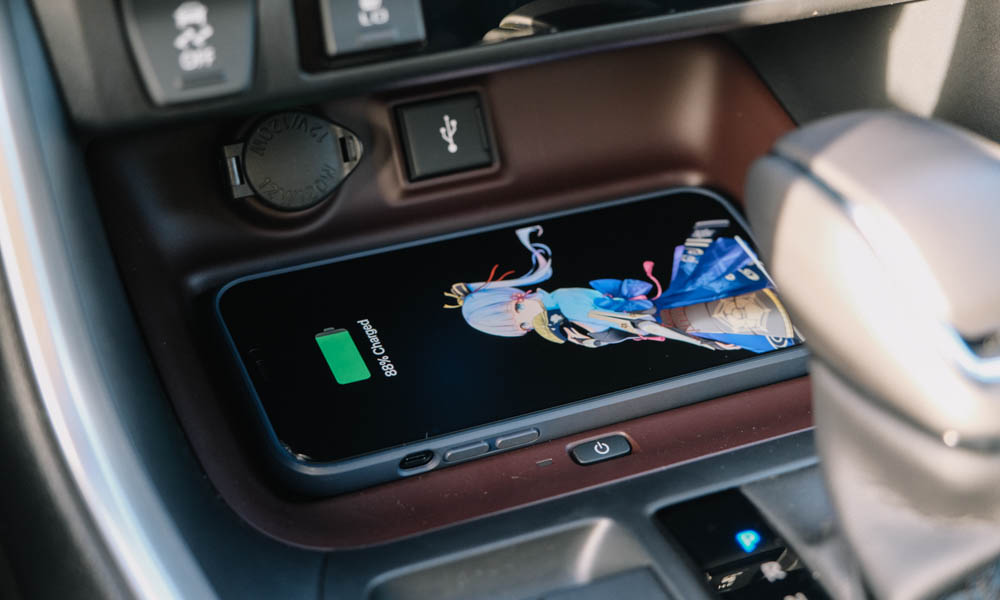
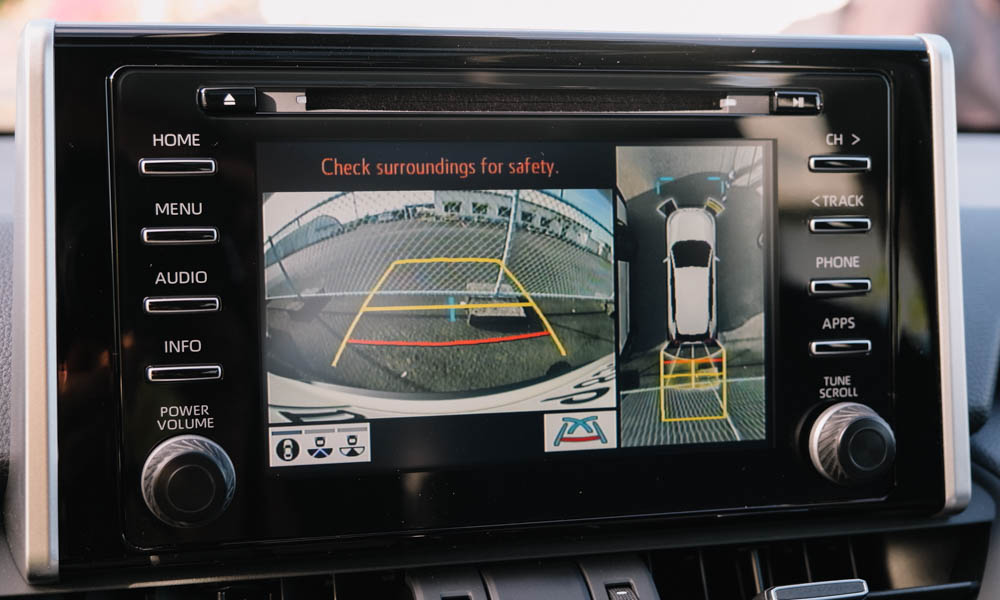
While the cabin may look plain at first glance with its subdued black-and-silver color scheme, it’s lined with premium materials all over. Having a panoramic sunroof helps lighten up the interior.
I appreciate Toyota’s restraint with piano-black, and the volume knobs and the storage compartments in the dashboard are lined with grippy rubber. It’s a thoughtful nod to tactility and usability, but I don’t know how well the switchgear will age once rubber reversion kicks in.
There’s a seven-inch display housed in the instrument binnacle, a six-speaker sound system mated to seven-inch infotainment with Apple CarPlay/Android Auto support, and a wireless charger, which I find a bit redundant since you’ll be using a cable anyway. It even has a 360° camera, something not seen on most Toyotas (and even some Lexus models).
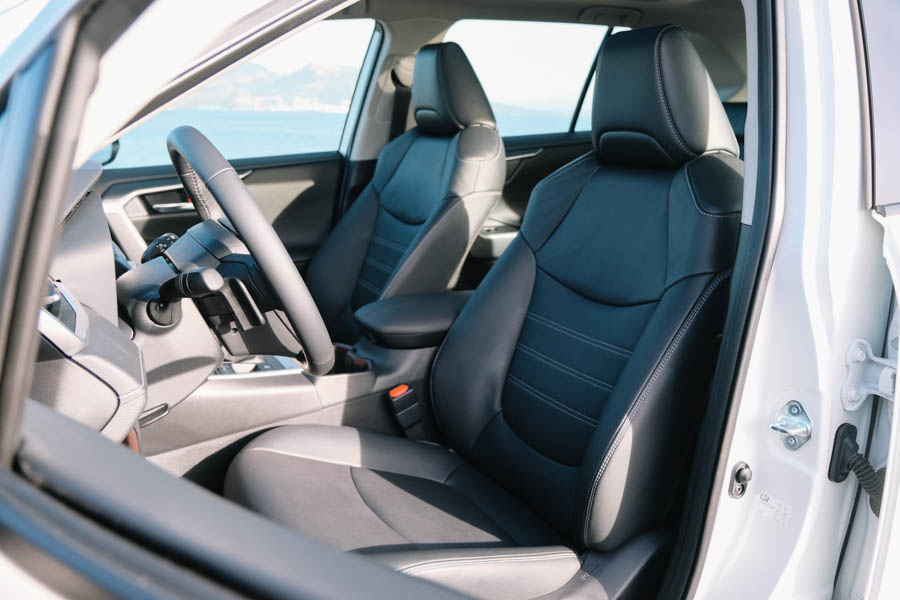
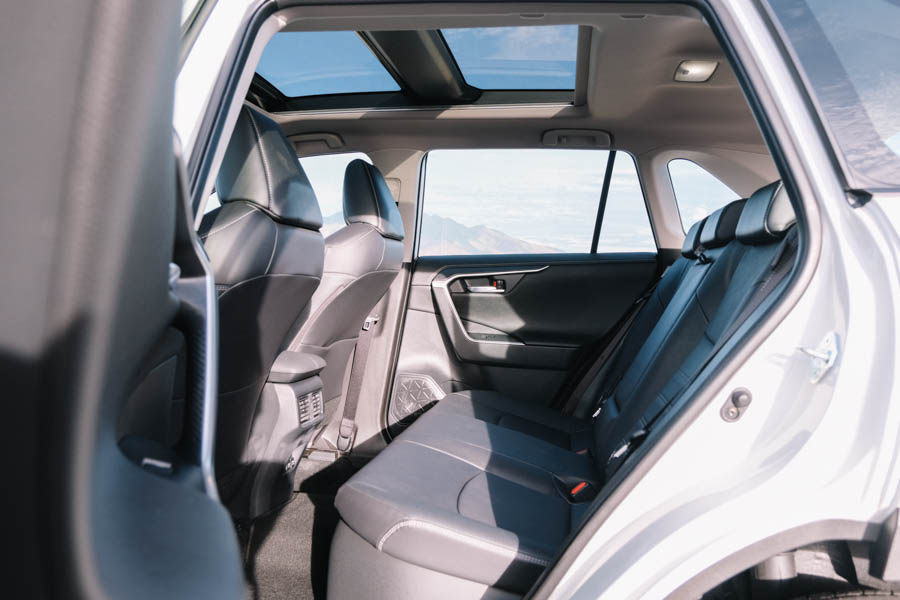
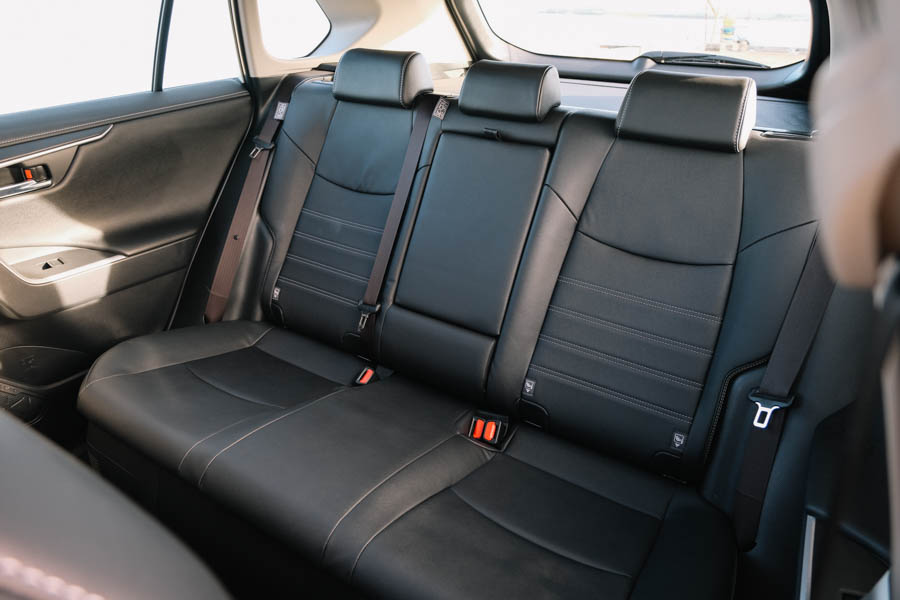
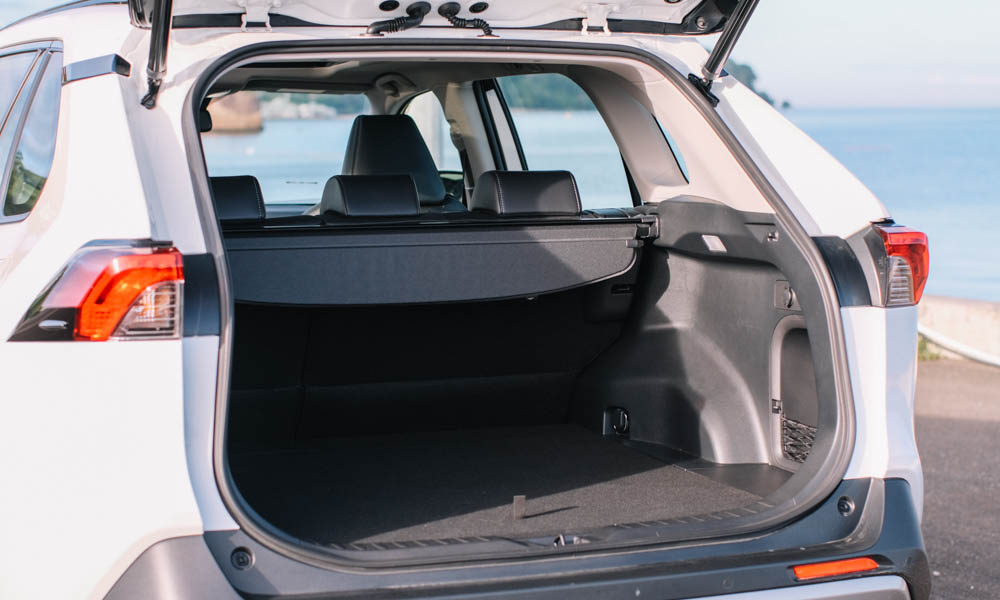
It was easy to see why my colleagues would look on with envy at those who were assigned the RAV4.
For a very long road trip, the comfort offered by the RAV4 was probably the best out of all the cars in the convoy (save for the rear seats of the Camry) with good visibility and a quiet ride (especially in EV mode).
The rear seats weren’t as comfortable as the front (which are heated, and only the driver gets eight-way electric adjustments with seat memory), but they offered a lot of legroom and headroom in my short seat time at the back. There’s also a sizable cargo area behind the electric tailgate—which has a kick sensor—that’s perfect for a weekend out with the family.
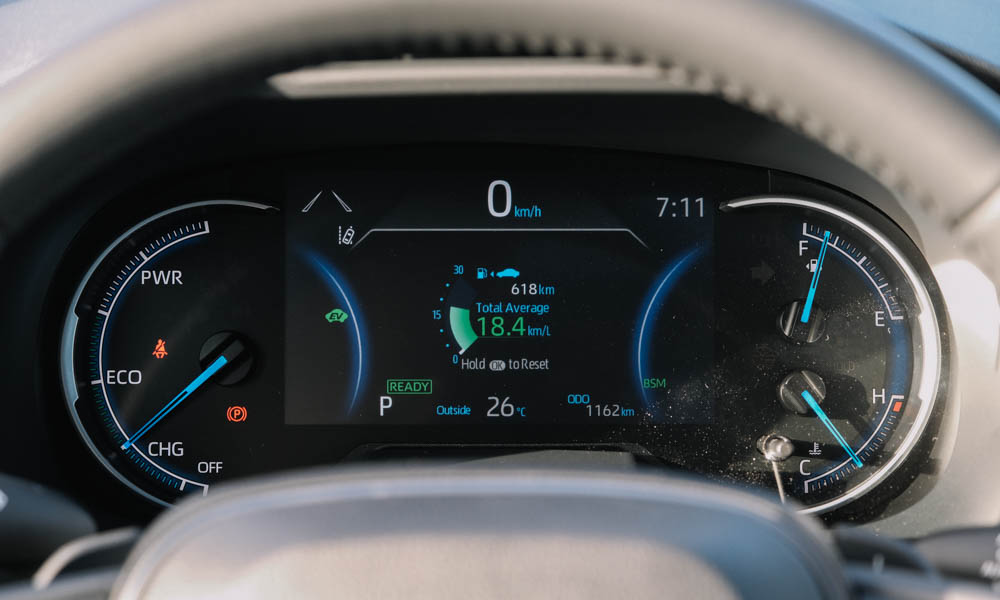
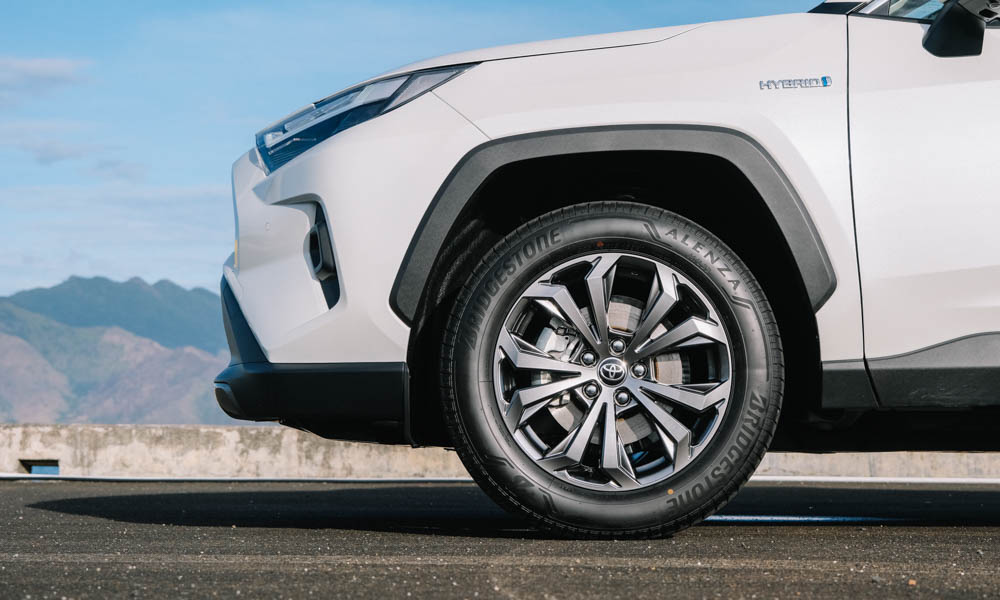
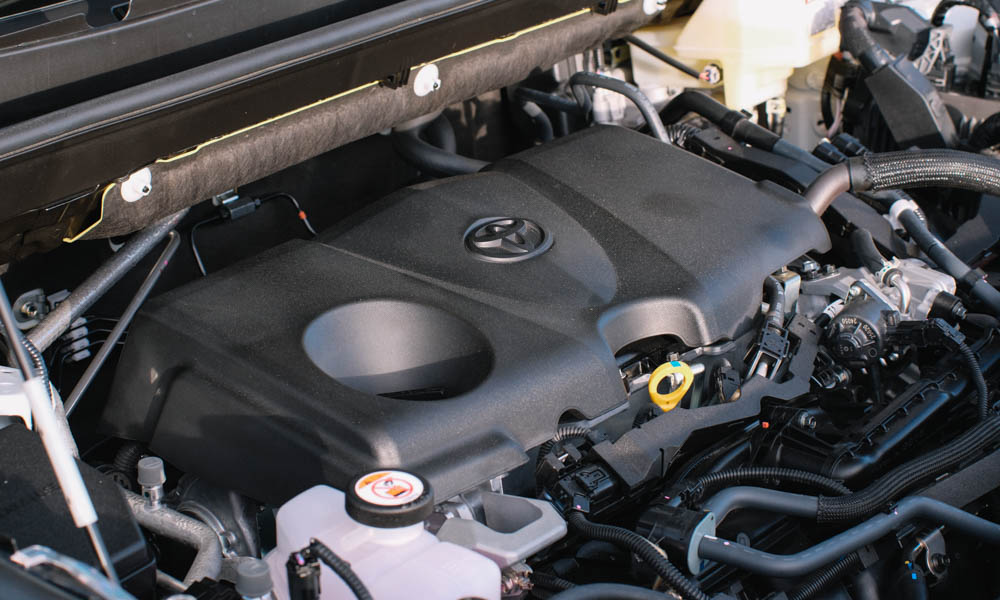
Most of Toyota’s hybrid lineup isn’t known for their performance, but for some reason, the RAV4 HEV is the fastest and best-feeling hybrid to drive in the lineup.
The 2.5-liter A25A-FXS engine is shared among the newer hybrid vehicles, and it has a combined system output of 215hp and 221Nm. It’s plenty fast for a vehicle of this size, and the instant torque from the electric motor is more than enough to cause the stability control light to flicker on and off when mashing it from a stop.
This wasn’t a fluke, because I was able to recreate it almost all the time. But for other uses, expect this to be an effortless cruiser with plenty of power on tap, should you need to overtake on a highway (with paddle shifters to use as well).
I wasn’t able to get a proper fuel economy reading, but the reading of 18.4km/L didn’t drop after 30 minutes of idling for a photo shoot.
While cornering, you will feel the heft of the batteries at the back. It’s no Corolla Altis or Camry, but you’ll appreciate how soft the ride is, easing over the ruts and the undulations in our roads. Braking is like with many hybrid vehicles. Let off the gas, and you’ll notice the car slow down a bit more aggressively like you were lightly tapping on the brakes.
This is regenerative braking at work and is one of the ways you’ll be recharging the hybrid battery. I didn’t have enough time behind the wheel of this car, but if you want an overview of what it’s like to travel with a hybrid vehicle, you can check out our article on Toyota’s HEV road trip.
Toyota Safety Sense does come as standard, and I benefited from it when a monkey decided to jump on the road in front of me. The car slammed on the brakes automatically to prevent a potential collision. Other than that, it was pretty easy to infer that the radar-based cruise control, blind-spot monitoring, and lane-tracing assists were in use during the expressway leg of our trip.
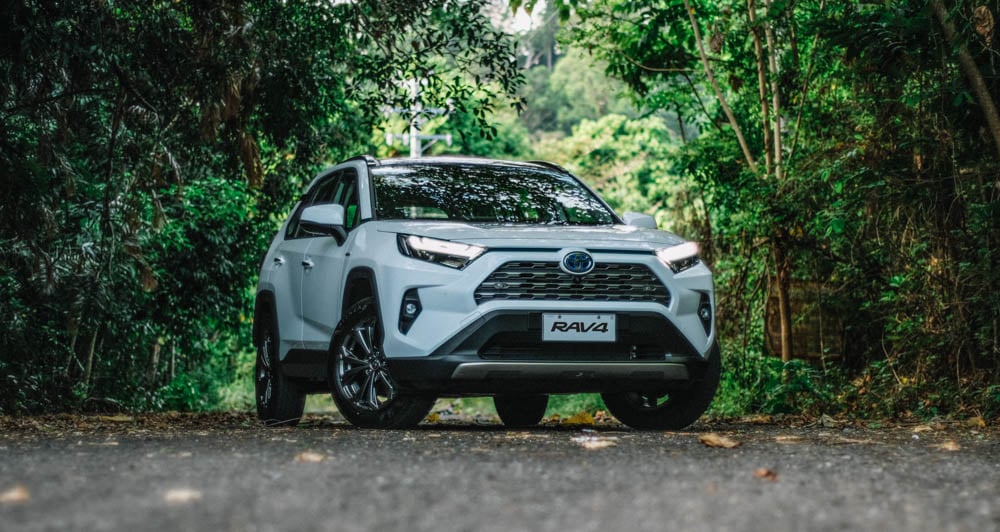
The price tag of P2,500,000 for the LTD variant (an additional P15,000 for White Pearl) is a pretty penny for a five-seater crossover. You’re paying for all the extra creature comforts and styling that this vehicle brings—the hybrid drivetrain is just the icing on the cake.
If this is still a little too much for you, there’s also a cheaper Hybrid XLE variant at P2,157,000. Needless to say, you’ll have to forgo some creature comforts.
You have to remember the RAV4 was never intended to be a volume seller in the first place. Considering that hybrid electric vehicles also enjoy some benefits from the new EV law, there are quite a few more reasons to reconsider the RAV4 once again.


0 Comments